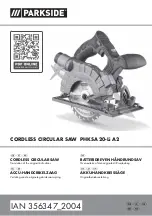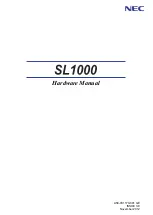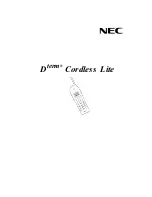
PHKSA 20-Li A2
GB
│
IE
│
NI
│
7
■
b)
If the saw blade jams or you stop working,
switch the saw off and hold it steadily in the
workpiece until the saw blade has completely
stopped turning. Never attempt to remove the
saw from the workpiece or pull it backwards
while the saw blade is still moving as this
could lead to a kickback.
Investigate and take
corrective actions to eliminate the cause of
blade binding.
c)
If you want to restart a saw that is still in the
workpiece, centre the saw blade in the cut
and check to ensure that the teeth are not
caught anywhere in the workpiece.
If the saw
blade catches it can jump out of the workpiece
or cause a kickback when the saw is restarted.
d)
Support large panels to minimise the risk of
blade pinching and kickback.
Large panels
tend to bend under their own weight. Panels/
boards must be supported on both side: i.e.
both in the vicinity of the saw cut and also at
the edge.
e)
Do not use blunt or damaged saw blades.
Saw blades with blunt or misaligned teeth may
cause excessive friction as the saw cut is too
narrow, and this can cause a saw blade jam
and kickback.
f)
Before sawing, ensure that the fastenings for
the cut depth and cut angle settings are tight-
ened.
If the settings change while sawing, the
saw blade might jam and cause a kickback.
g)
Be particularly careful when sawing in
existing walls or other obscured areas.
The
inserted saw blade could get caught on hidden
objects and cause a kickback.
Function of the lower blade guard
a)
Check whether the lower blade guard closes
properly before each use. Do not operate the
saw if lower blade guard does not move
freely and close instantly. Never clamp or tie
the lower blade guard into the open position.
If the saw is accidentally dropped, lower blade
guard may be bent. Raise the blade guard with
the release lever and make sure it moves freely
and does not touch the blade or any other part
at all angles and cut depths.
b)
Check the operation of the lower blade
guard spring. Have the saw serviced before
using it if the lower blade guard and spring
are not working properly.
Damaged parts,
sticky deposits or accumulations of chippings
can cause the lower blade guard to operate
slowly.
c)
The lower blade guard may be retracted
manually only for special cuts such as "plunge
cuts" and "compound cuts".
Raise the lower
blade guard with the release lever and
release it as soon as blade enters the mate-
rial.
For all other sawing, the lower blade
guard should operate automatically.
d)
Always ensure that the lower blade guard is
covering the blade before placing the saw
down on the workbench or floor.
An unpro-
tected, coasting saw blade will move the saw in
the opposite direction to the cutting direction
and saw anything in its path. Always, take into
account that the saw blade takes some time to
stop spinning.
IB_356347_PHKSA20-LiA2_LB6.indb 7
20.10.20 13:32












































